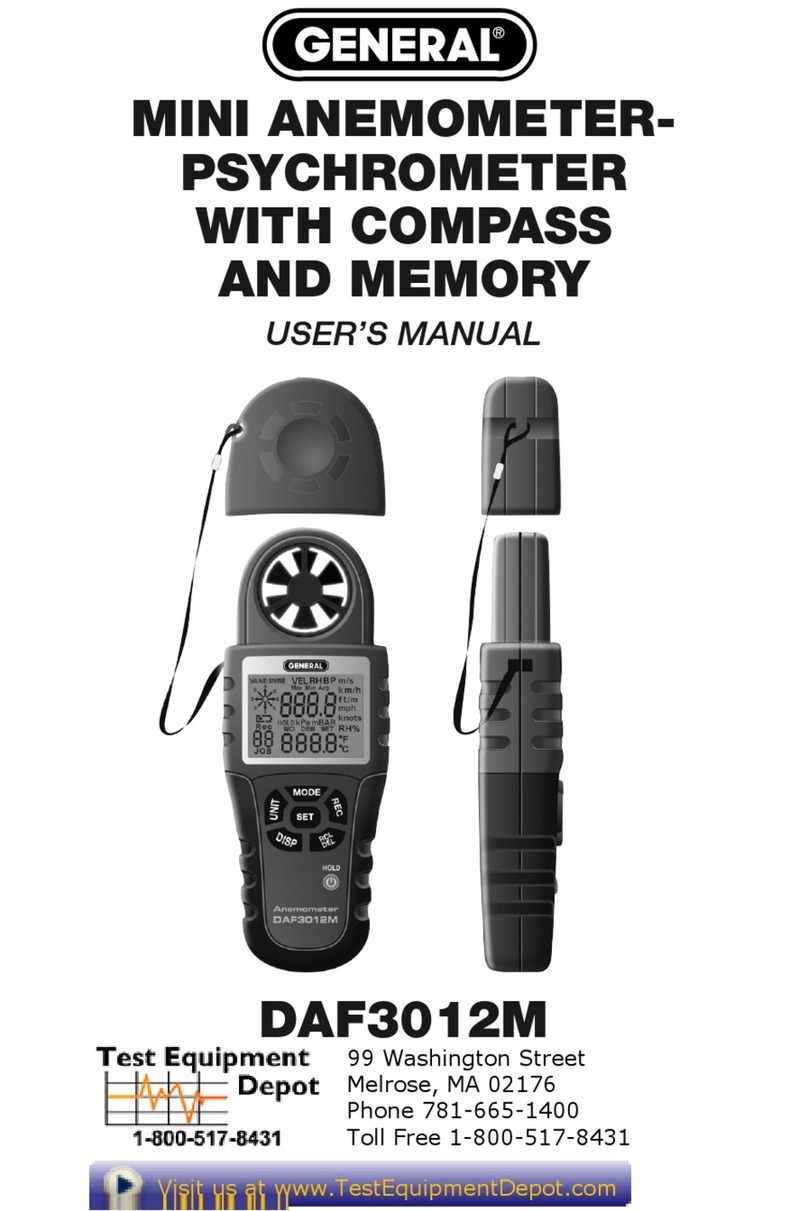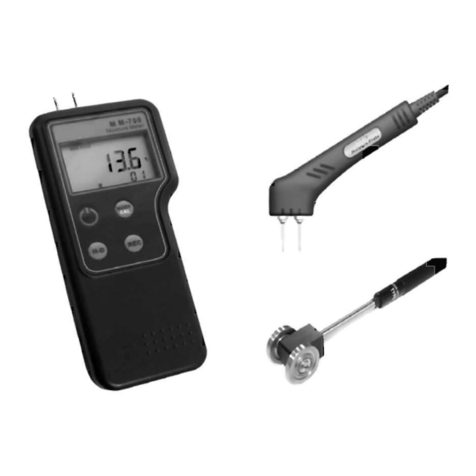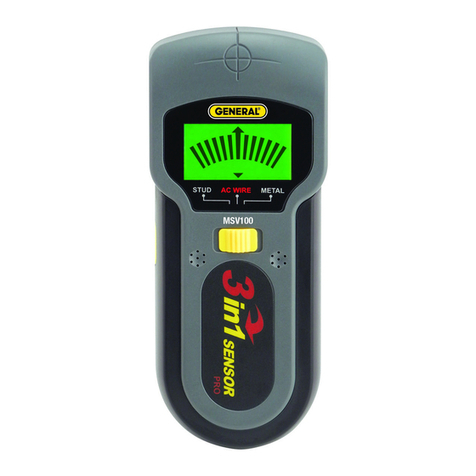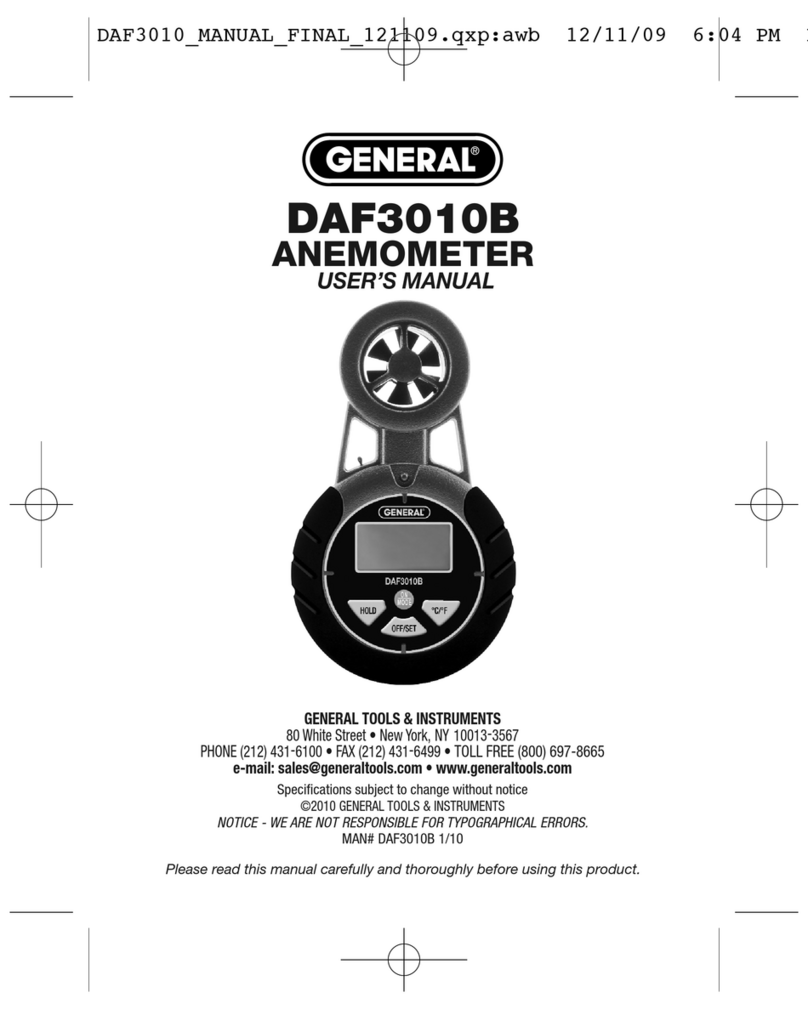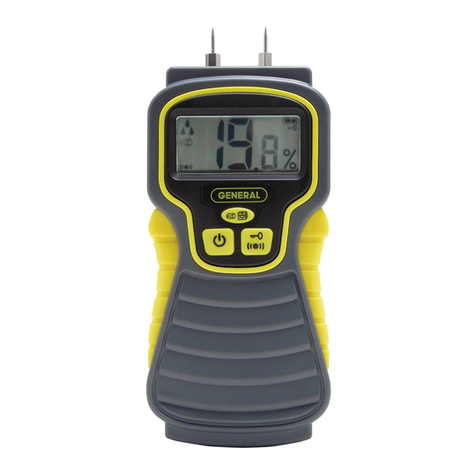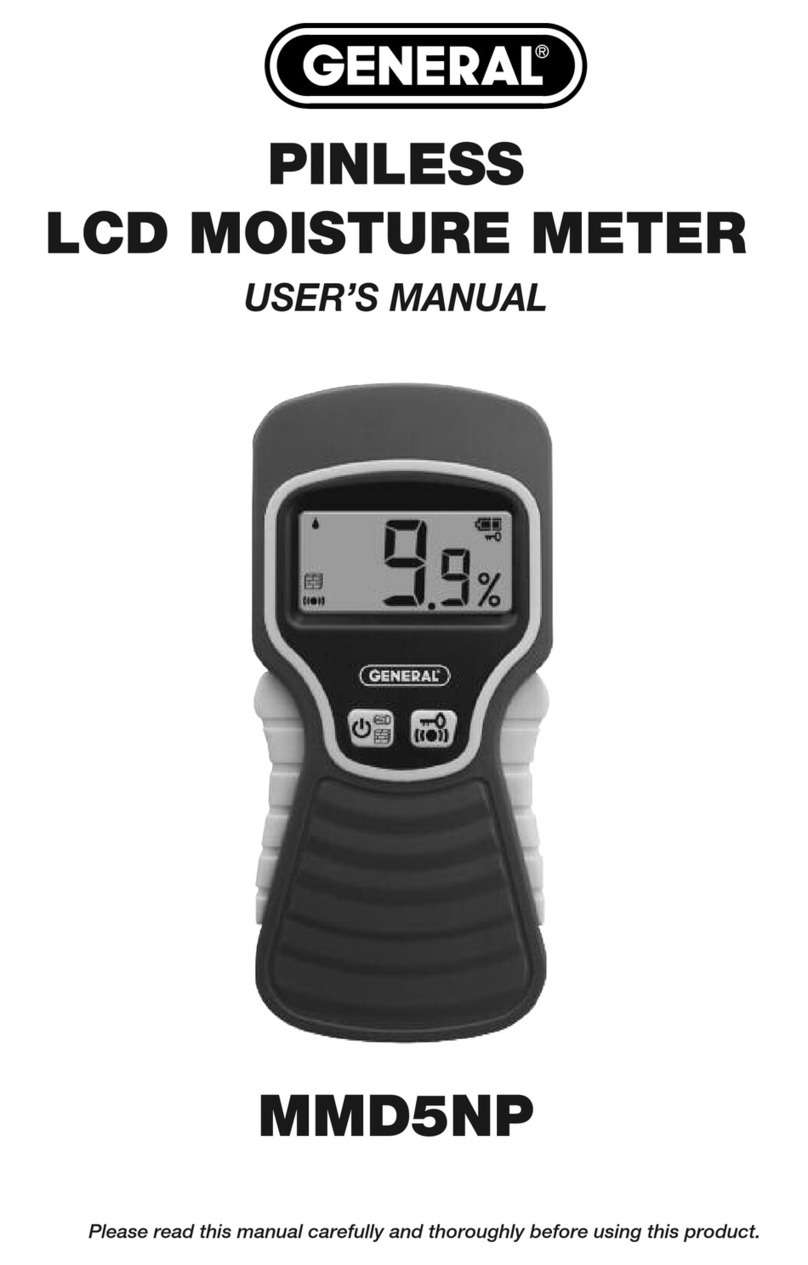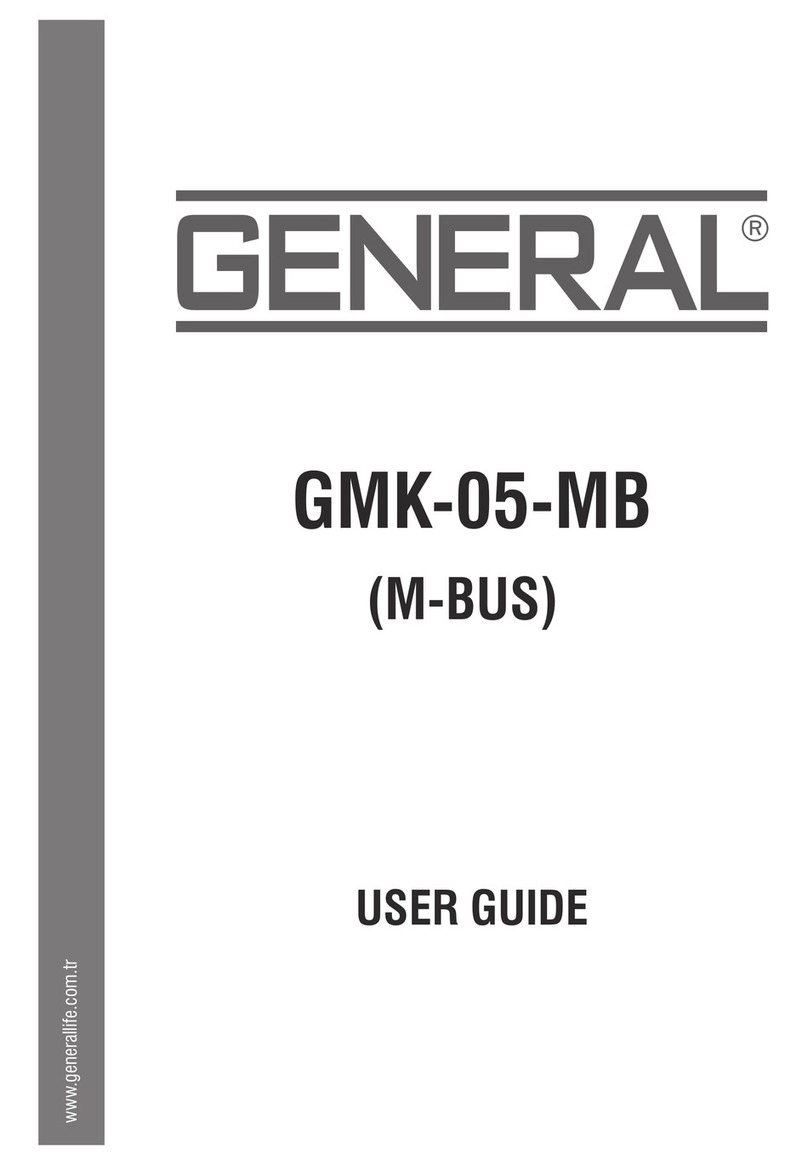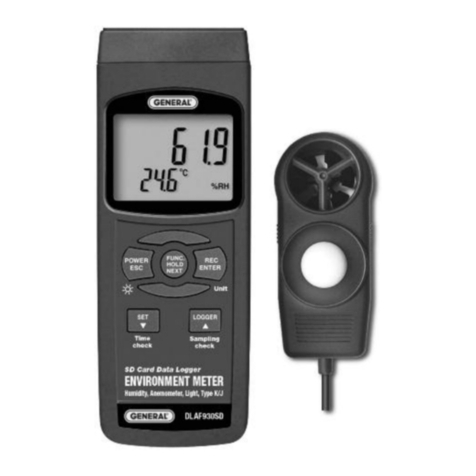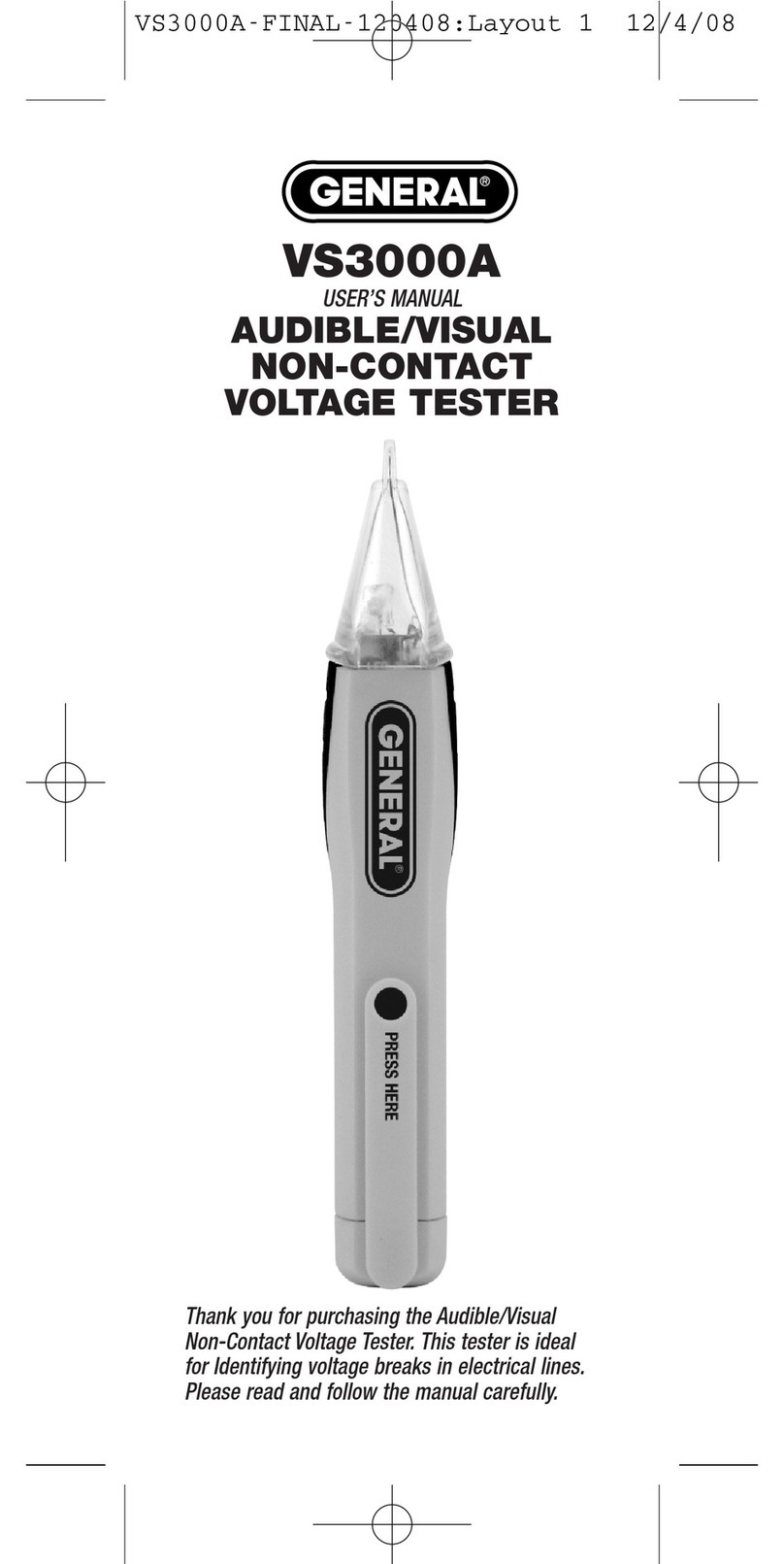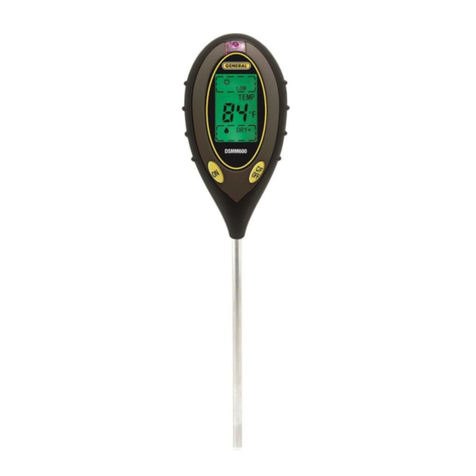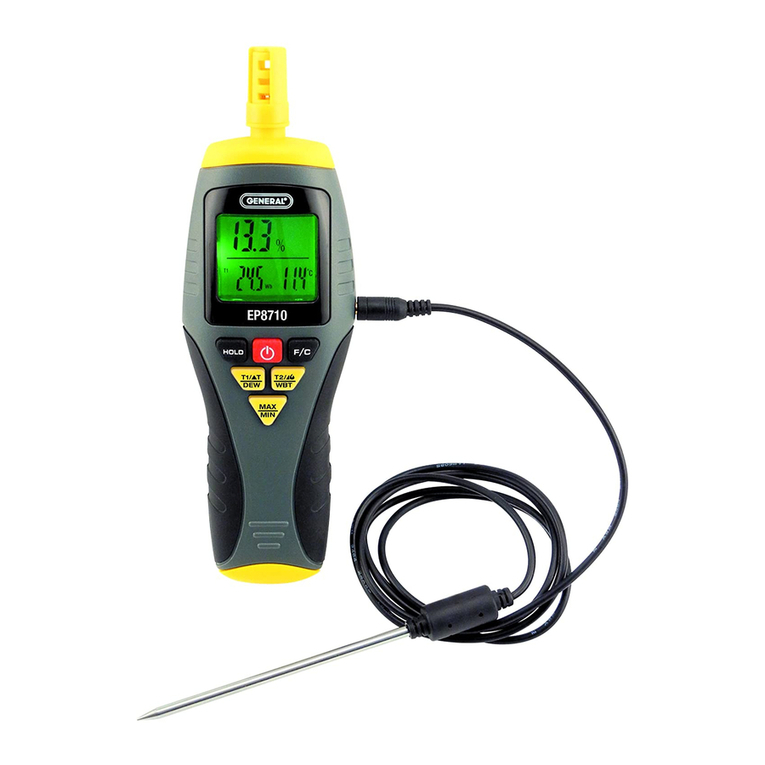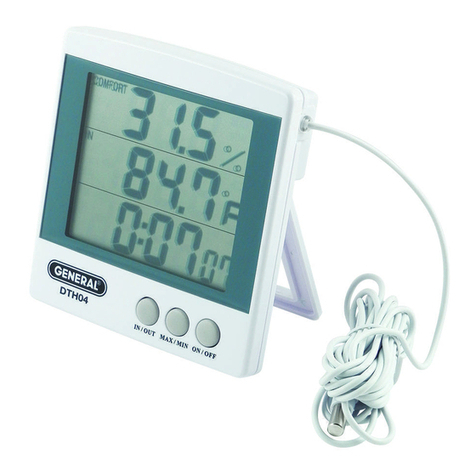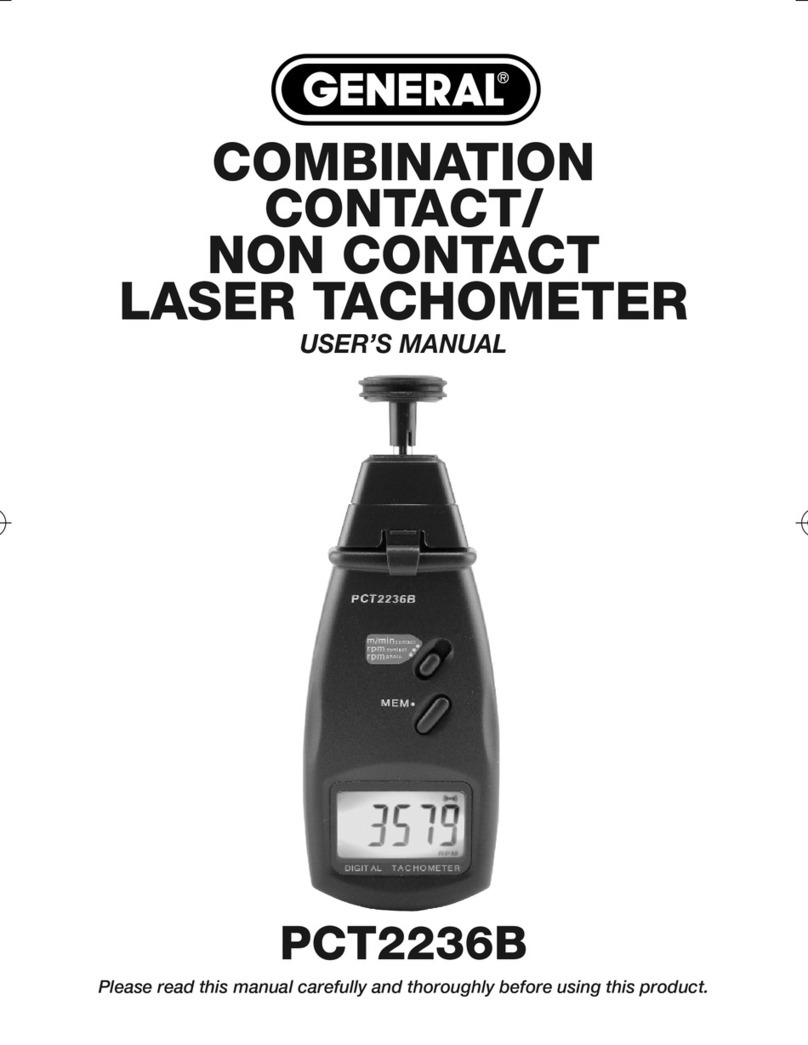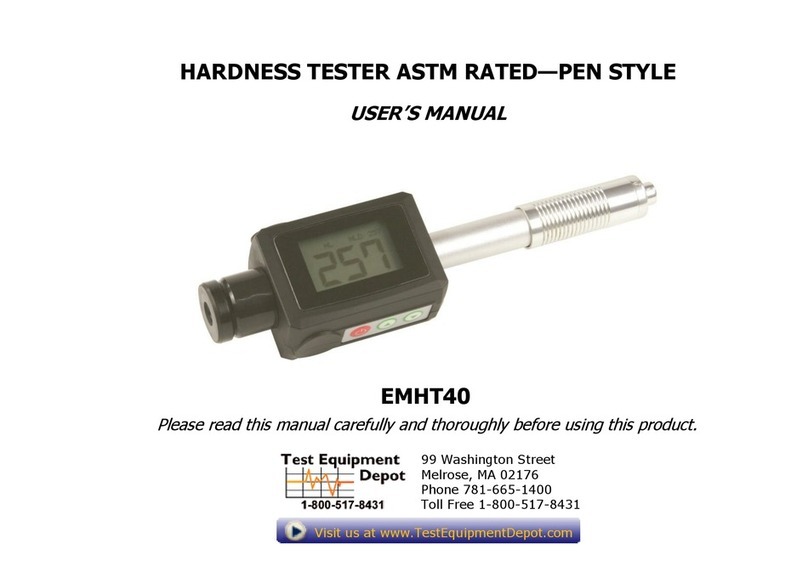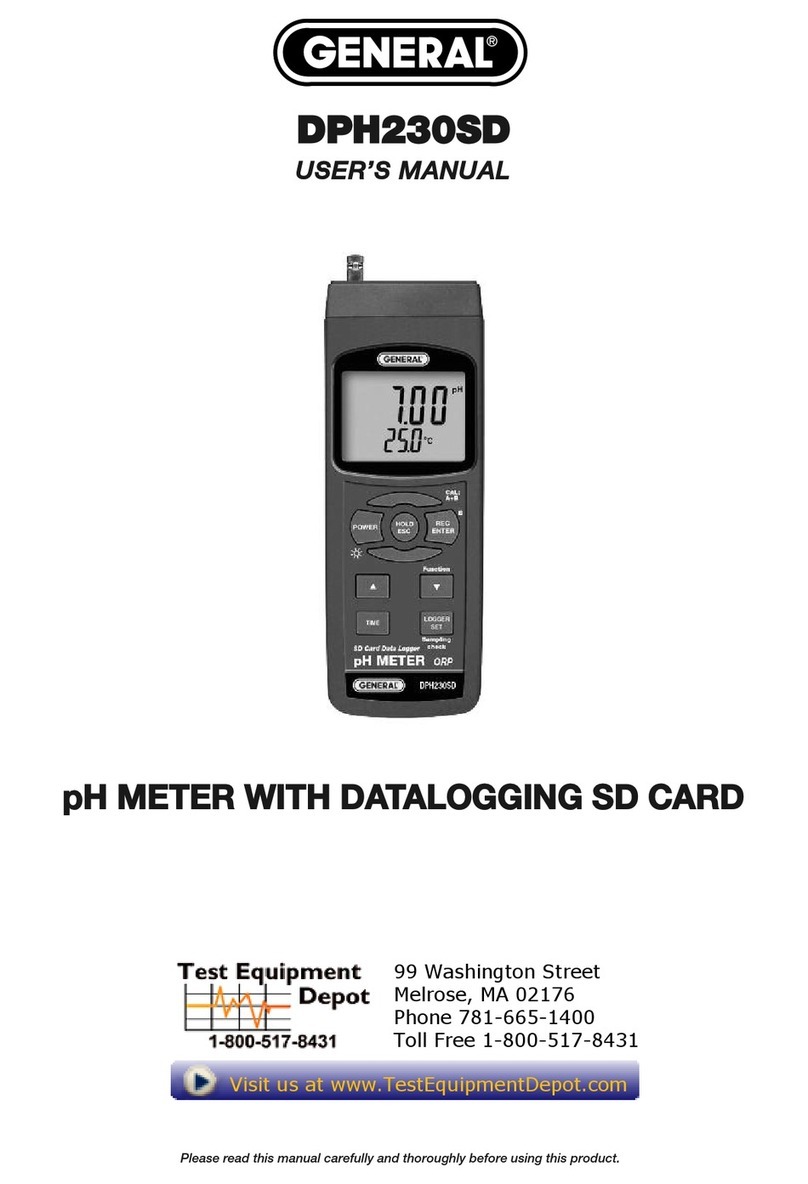
3
OPERATING INSTRUCTIONS
To make a la er di tance mea urement, hold the back
(battery compartment side) of the tool against a wall or the
floor and press the red measurement button (Fig. 1, Callout
1). This activates the display, the laser pointer and the
infrared transmitter/receiver. It also causes the laser
measurement enabled icon (Fig. 2, Callout 1) to flash. This
indicates that the tool is ready to make a laser
measurement. Within 15 econd , aim the laser pointer at
the opposite wall or the ceiling of the room or space and
press the red button again. The distance between the two
surfaces will be displayed on the LCD. The laser pointer will
automatically extinguish after each laser measurement.
If you take more than 15 econd to pre the mea urement
button a econd time, the la er mea urement enabled icon
(and the red pot on the target) will di appear. To attempt
another laser measurement, you must press the button
twice more—once to reactivate the laser pointer and
infrared transmitter/receiver while you re-aim, and the
second time to actually make the measurement.
To power off the LTM1 manually, press and hold the red
measurement button for at least three seconds.
To mea ure a di tance u ing the mea uring tape, extract
the blade from the housing by pulling on the tab at the end
of the blade (Fig. 1, Callout 2). The blade will remain at its
extracted length, making it easy to hook the tab behind the
target. To retract the blade, press the gray tape retraction
button on the bottom of the LTM1 (Fig. 1, Callout 5).
OPERATING &
MAINTENANCE TIPS
Because the LTM1’s laser pointer silently powers off 15
seconds after being activated, you’ll often find that when
you press the red button intending to make a
measurement, all you have done is reactivate the pointer
and infrared transmitter/receiver. As noted earlier, what you
must do in this case is press the button twice more—once
to reactivate the laser pointer and IR transmitter/receiver
while you re-aim, and the second time to actually make the
measurement.
When measuring horizontal distances, keep the tool as
horizontal as possible.
When measuring long distances, use a target plate made of
white paper or cardboard. Pressing the back of the tool
against a surface (rather than holding it in your hand) helps
to steady the laser pointer on distant targets.
If the display shows “all dashes” rather than a distance
reading, the likely cause is one of the following:
• The laser pointer is moving too quickly. To steady the
pointer, press the back of the tool (the side with the
battery compartment) against the wall or floor.
• The target is beyond the maximum range (50 ft.) of the
IR transmitter/receiver, or closer than the minimum range
of 10 in. In other words, the returned IR signal is too
weak or too strong.
• The target is too reflective. In this case, use a target plate
made of white paper or cardboard, as recommended
above.
• The target is flooded with ambient light. “Masking” the
target with white paper or cardboard should solve the
problem.
• The target is an LCD or plasma TV/computer screen. This
type of display absorbs incoming IR radiation and reflects
nothing back to the tool.
• The ambient temperature is outside the specified
operating range (32º to 104ºF).
Replace the batteries when the on-screen battery charge
icon begins flashing. Use alkaline batteries only. To avoid
having an old battery leak acid and ruin the tool, remove
both batteries when you do not expect to use the LTM1 for
a long period of time (several months).
Clean the LTM1 by wiping it with a damp soft cloth. Never
use solvents or abrasives.
Keep the tool away from water and extreme temperatures.
